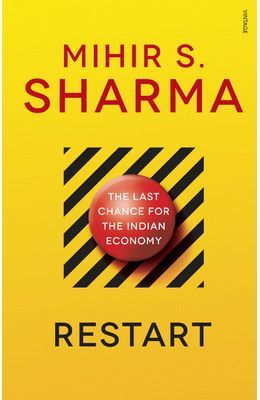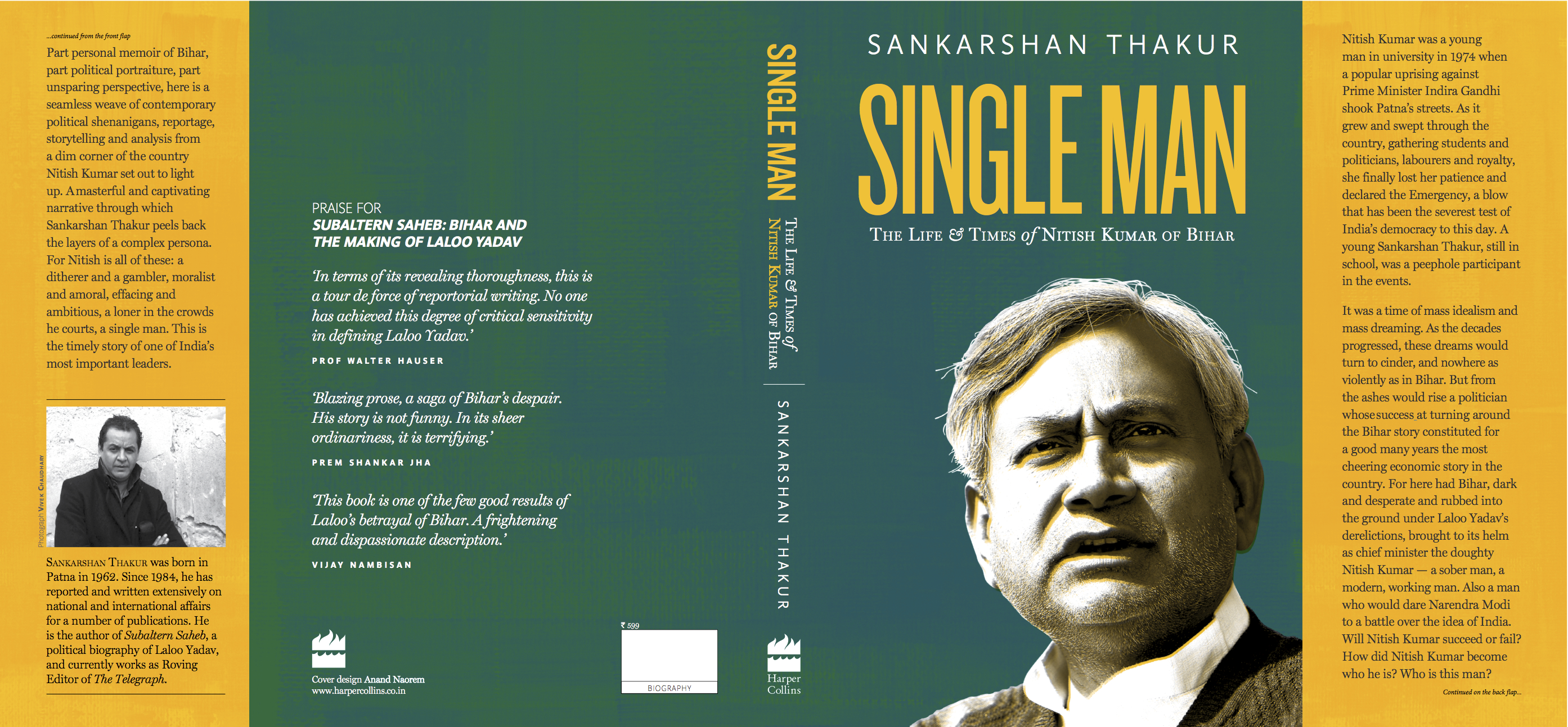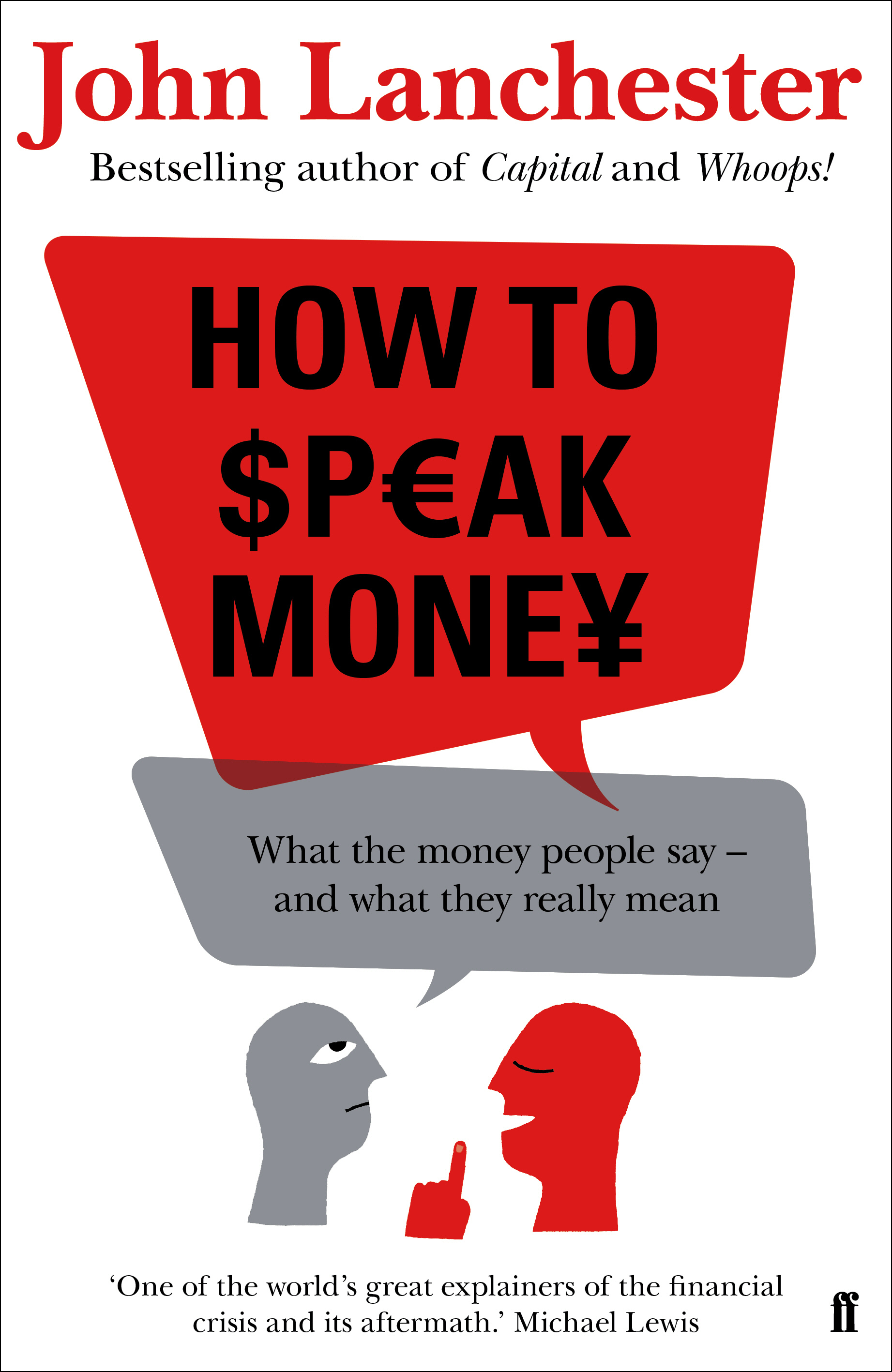Vivek Kaul
It is that time of the year when the media goes on an overdrive making top 10 lists on various things that happened in the year that was. So here is my list for the top 10 books in the non fiction category for this year (The books appear in a random order). Also, let me confess at the very beginning that this list is slightly biased towards books on economics and finance, which is what I love reading the most.
1) The Undercover Economist Strikes Back – How to Run – or Ruin – an Economy – -Tim Harford (Little, Brown Rs 599)
Tim Harford is my favourite writer when it comes to the non fiction category. His entire focus in anything that he writes is to ensure that the reader understands what he is trying to say. Not many writers make that kind of effort. And that possibly explains why Harford’s books like The Undercover Economist, The Logic of Life and Adapt, have been bestsellers.
In his new book, Harford tries to explain macroeconomics and the financial crisis that is currently on to the lay reader, in very simple English. In fact, Henry Hazzlit’s Economics in One Lesson (first published in 1946) remains my favourite book, when it comes to books which explain the dismal science in a language that everybody can understand. Harford’s The Undercover Economist Strikes Back now comes a close second.
2) Calcutta – Two Years in the City – Amit Chaudhuri (Hamish Hamilton, Rs 599)
My favourite Bengali author is Mani Shankar Mukherjee. His translations in English, appear under the name of Sankar. I discovered Sankar’s writing a few years back when someone recommended his book Chowringhee to me. Since then I have read a few other translations that have appeared in English. But I have read close to seven or eight translations of Sankar in Hindi. In fact, whenever I discover a bookstore which has Hindi books, the first thing I tend to ask them is do you have any books of Sankar? Nobody writes about life and its frailties like Sankar does.
Amit Chaudhuri, I feel comes a close second to Sankar, when it comes to writing books set in Calcutta. I have tremendously enjoyed reading his novels over the years. His new book Calcutta -Two Years in a City is about the Calcutta that was, the Kolkata that is and the Kolkata that will be. Given the fact that Chaudhuri hasn’t lived in Calcutta all the time (he spent a large part of his childhood in what was Bombay and since then has lived a lot in Great Britain) and neither has he left it completely, only to come back during Durgo Pujo, the book doesn’t get overtly nostalgic (like a lot of Bengali authors tend to) about the city. So, for example you will find very little of Satyajit Ray and Mother Teresa in the book. But you will find a lot about Bihari labourers who come to the city hoping to make it in life.
Chaudhuri also chronicles the change in Kolkata quite well. Older British buildings being demolished to make way for newer apartments. Oxford Book Store, the city’s most famous book store, now storing fewer books and more of CDs and stationery. The famous city eatery Flurry’s also makes an appearance.
If there was a book that I would want to read on a relaxed rainy afternoon (or a chilly foggy morning) with a cup of tea and a couple of samosas by my side, this would be it. (Another book that I would like to mention here is Amitava Kumar’s A Matter of Rats – A Short Biography of Patna. Having grown up in erstwhile Bihar I loved reading the book. My only complain with the book is that it ended just as I was starting to enjoy it)
3) Who Owns the Future? – Jaron Lanier (Allen Lane – Rs 850)
This is a fascinating book which raises many questions about the digital revolution that is currently on. One of the major questions that Lanier asks is what makes a few websites like Facebook, Instagram, Google, Twitter etc, so valuable? As he writes “its value comes from the millions of users who contribute to their network without being paid for it. Networks need a great number of people to participate in them to generate significant value. But when they do, only a small number of people get paid. That has the net effect of centralising wealth and limiting overall economic growth.”
Lanier also asks whether we are becoming too dependant by concentrating our digital lives around a few companies. As he writes “Suppose Facebook never gets good enough at snatching the ‘advertising’ business from Google. That’s still a possibility as I write this. In that event, Facebook could go into decline, which would present a global emergency…If Facebook starts to fail commercially, suddenly people all over the world would be at the risk of losing old friends and family ties, or perhaps critical medical histories.”
The same argument stands true for Gmail as well. For most of us it is a repository of a large amount of information, communication and documentation, that we need to keep going back to time and again. In that sense, these websites are becoming more like electric utilities as every day goes by. Who Owns the Future raises some fundamental questions that do not have easy answers.
4) Gandhi Before India – Ramachandra Guha (Allen Lane, Rs 899)
Mahatma Gandhi’s autobiography – The Story of My Experiments with Truth, was one of the first non fictions books that I happened to read. And as a young adult I found it very boring. Over the years I have been told that the Gujarati original is inherently more interesting and the translation in English, doesn’t quite work as well as the original (Gandhi translated the book himself). Also, the other complain that I had with Gandhi’s autobiography was that it does not get into much detail about his years in South Africa.
Ramachandra Guha’s Gandhi Before India addresses both the issues that I had with the autobiography. Guha’s research is top notch and he establishes in great detail that it was the years that Mohandas Karamchand Gandhi spent in South Africa, was what made him Mahatma Gandhi. Interestingly, Guha also tells us that Rabindranath Tagore was not the first man to call Gandhi a Mahatma. It was his doctor turned jeweller friend Pranjivan Mehta. The book also talks about the sacrifices made by Gandhi’s immediate family to help his struggle in South Africa. His eldest son Harilal regularly went to jail. Even his wife Kasturba went to jail for the cause. His nephews were also a part of his struggle.
This book is a must read for every Indian in order to realise how great Gandhi really was.
5) Battles Half Won – India’s Improbable Democracy – Ashutosh Varshney (Penguin Viking, Rs 599)
The book’s subtitle tells us what the book is all about. As Varshney puts it “the odds against democracy in India were extremely high”.
Democracy came to West after the industrial revolution which ensured that incomes had reached a substantially high level. In the Indian case, democracy as a form of government was adopted when only around 15-17% of the population was literate and the per capita income was very low. In fact, many countries that emerged from decolonization adopted democracy as a form of government. But of these countries democracy survived only in India, Mauritius, Belize, Jamaica, Papua New Guinea, Solomon Islands and Vanuatu. Each of these countries other than India are very small and have a higher income than that of India.
Also, research shows that democracies that have an economic growth rate of lesser than 5% per year collapse at a higher rate than democracies that have an economic growth rate of higher than 5%. As Varshney puts it “India’s economic growth rate has been higher than 5% per annum since 1980, but in the period 1950-1980, Indian economy grew at only 3.5% per annum.” Given these reasons, it is very surprising that democracy in India has not only survived, but is thriving. The recent success of the Aam Aadmi Party clearly proves that.
To know the reasons behind why democracy has survived in India, Varsheny’s book is an excellent read.
6) Emergency Retold – Kuldip Nayar (Konark Rs 295)
The only period since independence when India has not been a democracy was the period between June 26, 1975 and March 21, 1977, when the then prime minister Indira Gandhi, got the president Fakhruddin Ali Ahmed to declare a state of emergency.
Veteran journalist Nayar writes about the period in Emergency Retold. The book was first published in 1977 under the name The Judgement. The paper back edition was released this year. Nayar’s book reads like a political thriller. It starts on June 12, 1975, when Justice Jagan Mohan Lal Sinha found Indira Gandhi guilty on the charge of misuse of government machinery for her election campaign in the 1971 Lok Sabha election. Two weeks later Indira Gandhi got the President Ahmed to declare a state of emergency.
Nayar goes into great detail about how this was done. One of the interesting things he points out was that a copy of the censorship rules and details of the machinery required to implement them in Philippines, was provided to Sanjay Gandhi, by a businessman fried of his Kuldip Narang, who in turn had got it from his friends in the American embassy. The book is full of such interesting trivia from those times. In the end, it is also a grim reminder of the cost that India has had to pay for keeping the Nehru-Gandhi dynasty in power for large periods of time since independence. My only complain about the book is that there are just way too many typos.
7) 40 retakes – Bollywood Classics You May Have Missed – Avijit Ghosh (Tranqubear, Rs 395)
This book is really the joker in the pack. I read it early October on a day I was very bored and finished reading it under four hours. 40 Retakes is a book on 40 brilliant movies which flopped or did not pass the critics’ test over the years. Given the number of Hindi movies that get made every year, it would have been very difficult to arrive at the list.
I am no expert on the Hindi cinema of the 50s, 60s and 70s, but have watched a fair bit since the 1980s. Some of my favourite movies like Prakash Jha’s Hip, Hip, Hurray set in Ranchi and Vidhu Vinod Chopra’s Khamosh set in Pahalgam are a part of the list.
Kabir Kaushik’s Sehar and Tigmanshu Dhulia‘s Haasil, probably two of the finest movies set in the badlands of Uttar Pradesh, also make the cut. Ketan Mehta’s terribly underrated Aar ya Paar, a movie which I fell in love with when I first saw it, even though it was a rip off of a James Hadley Chase novel, is also a part of the list. Anurag Kashyap’s Gulal, Shimit Amin’s Rocket Singh and Sudhir Mishra’s Is Raat Ki Subah Nahi make it to the list as well.
A movie which should have been on the list is Kundan Shah’s Kabhi Haan Kabhi Naa, which I feel is the best Shah Rukh Khan movie till date. At the risk of getting booed I would like to say that Kabhi Haan Kabhi Naa is Kundan Shah’s finest film. Jaane Bhi Do Yaaro was made on the editing table.
Also, Navdeep Singh‘s Manorma Six Feet Under, should have been a part of the list. It’s a terrific re-working of Roman Polanski’s China Town.
8) When the Money Runs Out – The End of Western Affluence – Stephen D King (Yale University Press, Price not mentioned)
Economists who work for financial institutions are expected to be optimistic about things. But doesn’t seem to be the case Stephen D King, who is the Group Chief Economist at HSBC. In When the Money Runs Out, King points out that there is a lot that is wrong with the way the financial systems all over the Western world have evolved. The fundamental point that he makes in the book is that the ability of the developed countries to keep generating a reasonable economic growth has gone down. There are economic and political implications of the same. When the West was growing the governments promised a lot of benefits to its citizens. They are no longer in the situation where they can afford to pay off these benefits.
Most developing countries instead of getting used to the new low growth scenario have responded to it by printing huge amounts of money, in the hope of creating more economic growth. King calls them stimulus junkies. He discusses in great detail why its not so easy to suddenly stop or go slow on money printing, something which the Federal Reserve of United States has been trying to do for a while.
Anyone looking to understand how the current financial crisis will evolve in the years to come, should be reading this book.
9) Money – The Unauthorised Biography – Felix Martin ( The Bodley Head, Rs 599)
Over the last few years, the history of money has fascinated me a lot and I have read scores of books trying to understand how money actually evolved. But my journey on the history of money ended with this book. It’s a must read for anyone wanting to understand on what money really is?
10) Mofussil Junction – Indian Encounters 1977-2012 (Penguin Viking, Rs 599)
As they say, save the best for the last. If there was one book that I would have read this year, it would have to be Ian Jack’s Mofussil Junction. The book is a fantastic collection of short write-ups and essays on India. In fact, Jack’s prose at times makes you feel that you are reading some classic fiction.
My favourite essay in the collection is Somewhere to Call Their Own. The essay deals with Anglo Indians who decided to settle down around 1500 feet up in the Chota Nagpur hills, in this town called McCluskiegunje, near Ranchi. The most interesting character in this essay is an Anglo Indian girl called Kitty Memsahab, who actually sells fruits at the McCluskiegunje railway station to make a living.
As the concluding lines of the essay go “Down at the station I saw Kitty again…Now she was preparing a basket of oranges for the evening train and joking in Hindi with brewers of country liquor. She seemed to have made her peace – perhaps not with India, which is too large and complicated an idea, but at least with that small part of it where she was born.”
Reading about Kitty reactivated an old memory about a story that the India Today magazine had done around her sometime in the late 1980s. I have vague memories of the magazine carrying a photograph taken from inside a train showing a white woman selling bananas. This 2013 story that appeared in the Mint suggests that Kitty might still be selling bananas.
I also loved the epilogue of the book tremendously. Here Jack talks about a person called Major that he used to know in what was Calcutta. As the concluding lines of the book go “I got divorced soon after and with no in-laws to visit I didn’t see Kolkata again for nearly twenty years. The Major died – I’m not sure how. Smoking while walking could have been a contributory cause, it being a rule he often ignored. I miss his uncomplicated, upcountry curiosity: why, how, where, when? I miss his mischief. I mourn those figures slithering in the Hooghly’s mud, happy to make fools of themselves, once upon a time.” As I said, fantastic prose.
PS: If I could extend this list, the two books that I would put in are Jagdish Bhagwati and Arvind Panagariya’s India’s Tryst With Destiny and Jean Drèze and Amartya Sen‘s An Uncertain Glory: India and its Contradictions. Another book that I would like to add to the list Neil Irwin’s The Alchemists – Inside the Secret World of Central Bankers.
An edited version of this article appeared on www.firstpost.com on December 27,2013
(Vivek Kaul is a writer. He tweets @kaul_vivek)



